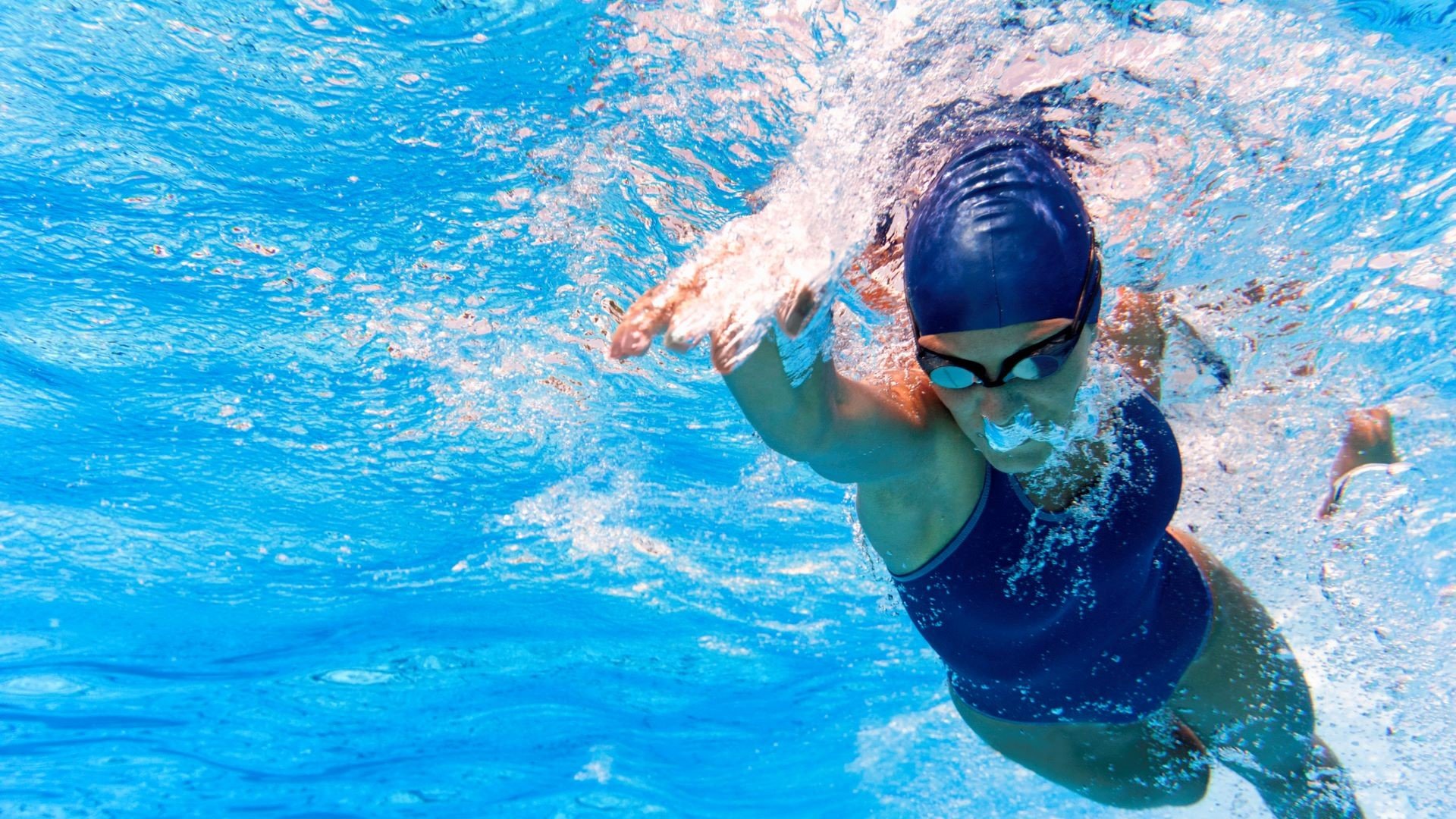Preventing Drowning From Underwater Breath-Holding

A strong swimmer at your school or campus pool swims laps underwater to increase his lung capacity. Lifeguards pay little attention to him and focus on weaker swimmers. Another lap swimmer notices the underwater swimmer lying motionless at the bottom of the pool. By the time lifeguards pull him from the pool, the swimmer has drowned in water only a few feet deep.
Could that following situation occur at your K-12 school, college, or university? Sadly, it has occurred at several institutions. The cause is Underwater Hypoxic Blackout (UHB), which occurs when swimmers hold their breath underwater for prolonged periods.
Eleven people in the U.S. drown every day, and drowning deaths have increased in recent years, according to the Centers for Disease Control and Prevention. While most lifeguards and pool administrators know drowning is a common hazard, many don’t realize drowning kills not only weak swimmers but also good swimmers in pools staffed by lifeguards.
What Causes Underwater Blackouts?
Breathing lets the body inhale oxygen and exhale carbon dioxide. As the body’s level of carbon dioxide increases, it triggers a natural impulse to breathe.
Many swimmers who hold their breath underwater learn they can stay under for longer if they breathe rapidly or take deep breaths before descending. The swimmers mistakenly believe hyperventilating or deep breathing increases the amount of oxygen in their lungs. This activity doesn’t add much oxygen to the lungs — in fact, it significantly decreases the body’s carbon dioxide, which suppresses the body’s impulse to breathe.
These swimmers misinterpret the lack of impulse to breathe underwater while holding their breath as a signal that their oxygen level is sufficient. Instead of surfacing to breathe when oxygen levels drop, they black out. If not discovered quickly, they typically inhale water into the lungs, convulse, and die of cardiac arrest.
Cold water can accelerate blackout risk, amplifying the body’s shock response. Alcohol consumption also substantially increases the risk of UHB, by 90%, when holding breath. Being sick or recovering from a recent illness can strain your respiratory system and make strenuous activity riskier.
Training Aquatics Staff
Aquatics staff, including lifeguards, pool managers, and coaches, must understand UHB and how it results from underwater breath holding exercises and games. The American Red Cross includes information on dangers of prolonged breath holding in its lifeguarding manual, but the message doesn’t always get through.
Monitoring for UHB is challenging. Lifeguard training programs generally focus on surveillance and rescue techniques for weak and struggling swimmers. Because those who fall prey to UHB are typically strong, experienced swimmers trying to improve or demonstrate their underwater swimming prowess, lifeguards who don’t understand UHB may not appreciate its dangers.
Another practical challenge for lifeguards is detecting a swimmer experiencing UHB. While movies may portray drowning victims as flailing around, screaming for help, and struggling to stay afloat, the reality is usually different. Typically, UHB occurs underwater, where a struggling swimmer can’t easily be seen. Many training programs miss the mark, teaching scanning patterns and other drowning concepts that emphasize the pool’s surface rather than its bottom.
Even in crystal clear water, a swimmer at the bottom of a pool can go unseen due to:
- Reflections
- Glare
- Refractions at the water’s surface
Most UHB victims are found motionless underwater and, in some cases, victims’ arms and legs may move involuntarily in a swimming-like motion as they lose consciousness. Often a swimmer wearing goggles, not the lifeguard, is first to notice a UHB victim’s body underwater.
To help lifeguards, many public pools have installed Poseidon, a computer-aided drowning detection system. The system uses computer vision technology and a network of cameras mounted above and below the pool’s surface to analyze underwater activity and alert the lifeguard in seconds of a swimmer in trouble.
Even if they trained on UHB, lifeguards shouldn’t agree to supervise anyone who wants to engage in prolonged underwater swimming. Submersion for even a half minute can lead to drowning. Guards owe attention to all swimmers, so keeping special watch over a single swimmer engaged in endurance breath holding isn’t appropriate.
Because many water safety training programs don’t address UHB directly, consider providing supplemental training on the subject or retain an independent expert to do so.
Managing Your Aquatic Facility
Many UHB incidents occur in a swimming pool rather than at a beach, lake, or other natural setting. Because pools provide a predetermined path and distance, they’re particularly attractive to swimmers setting goals for underwater swimming or challenging others to do so.
Protect swimmers from the dangers of UHB by improving your pool facility and managing the activities of those who use it. Review the rules and regulations governing pool use, examine your facility’s layout and equipment, and consider taking these steps:
- Prohibit prolonged underwater breath holding. If a swimmer is underwater for more than a few seconds, lifeguards should jump in and force the swimmer to the surface.
- Use clear, prominent signs to indicate underwater breath holding and hyperventilation are prohibited. The most effective signs display the universal symbol for breath holding.
- Don’t let lifeguards keep a special watch over any swimmer. Lifeguards should refuse to do so if asked and be prepared to explain why your pool prohibits underwater breath holding.
- Immediately recover any swimmer sitting or lying on the bottom of the pool. Do this even in shallow water. It only takes seconds for a swimmer’s underwater activity to lead to serious injury or death.
- Ensure lifeguards maintain a clear view of the total facility and safety gear. They should use a guard stand or rove the facility as needed. Access to flotation devices and oxygen aids can aid in assisting a UHB victim.
- Install a computer-based drowning detection system. These systems are designed to act as the lifeguard’s “third eye,” detecting and notifying the lifeguard of a body coming to rest on the pool’s bottom within 10 seconds.
More From UE
Checklist: Swimming Pool Safety
Additional Resources
Underwater Hypoxic Blackout Prevention Foundation: Underwater Hypoxic Blackout Prevention
Aquatics International: Serious About Fun — Safety Considerations for Unconventional Pool Activities
Clarion Safety Systems: Pool Safety Signs
About the Author
-

Alyssa Keehan, Esq., CPCU, ARM
Director of Risk Management Research & Consulting
Alyssa oversees the development of UE’s risk management content and consulting initiatives, ensuring reliable and trustworthy guidance for our members. Her areas of expertise include campus sexual misconduct, Title IX, threat assessment, campus security, contracts, and risk transfer. She previously handled UE liability claims and held positions in the fields of education and insurance.





